Was the true story about Romeo and Juliet different from the one told in the play by William Shakespeare?
Romeo and Juliet. The true story.
Romeo and Juliet is a play by the extraordinary English author William Shakespeare. Written probably in 1595 (we don’t know the exact year…), it is, together with Hamlet, maybe the most famous text in all of Shakespeare’s production. And it has reached an audience far beyond book readers, and theater public. The title, Romeo and Juliet, has become a sign of deep and true love, so strong and passionate that living without the other becomes unbearable.
It was an immediate success when it came out and has been played from its birth date until modern days all over the world, probably hundreds of thousands of times. Romeo and Juliet has been filmed more than 150 times for TV as well as for the big screen, it’s been turned into ballets, operas, modernized plays, and musicals, of which the most famous is of course West Side Story by Leonard Bernstein.
 A short synopsis.
A short synopsis.
Verona, Italy. The two families Montague and Capulet are at “war”. The young girl Juliet from the Capulet clan falls in love with Romeo from the Mantague-clan. Juliet is supposed to marry another Capulet guy but she marries Romeo secretly.
Romeo, together with two other Montague buddies, meets Tybalt, Juliet’s cousin. They start to fight and Tybalt and one of Romeo’s friends die. Tybalt by the hand of Romeo.
Romeo becomes the main target for the Capulet family and The feud ignites. And now we reach the famous ending…
Juliet gets a poisonous potion from a monk, but one that will only make her seem dead. Instead, she will sleep for several days, before waking up again, as good as new. She sends a message to Romeo, but he receives only half of it and thinks she’s really dead.
Overcome by grief he runs to her tomb, sees her lifeless body, and kills himself, he too with poison, but real, strong, killing-10-men-kinda-poison. Then Juliet wakes up, sees her lover dead, and ends her life with Romeo’s dagger.
The context in which the play was written.
Shakespeare was reasonably young when he wrote it, around 30. The play was designed to be performed in daylight on a simple thrust stage, a very economic and minimalistic setup. One balcony and one tomb. Apart from that, there should be no or very little scenery. The costumes and the skill of the actors together with the text should be enough to grasp the concentration of the audience.
Romeo and Juliet. The true story.
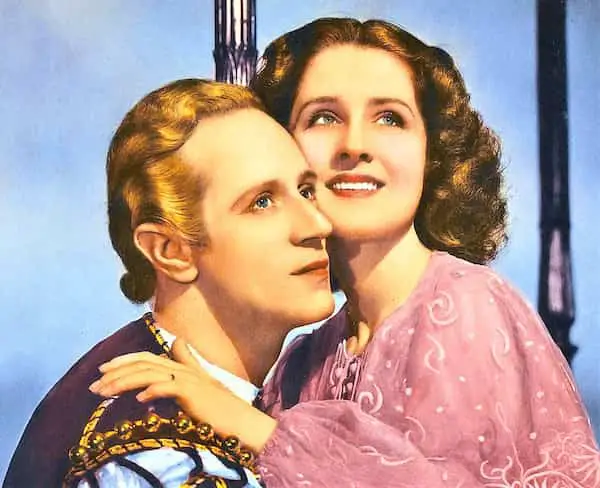
Romeo and Juliet was in no way an invention by Shakespeare. The sad love-story frame was popular throughout Europe, and not only in western renaissance literature but since the beginning of writing itself. People have always loved to cry over innocent, true, and deep love that goes wrong. It’s in our DNA.
The story about Pyramus and Thisbe in Metamorphoses by the Roman poet Ovid, tells a story about two young lovers who run away together, since their parents don’t consent to their love. Pyramus mistakes a bloody veil for the death of Thisbe, and kills himself. When the girl comes back, she too puts an end to her life.
The story is interestingly included in A Midsummer Night’s dream, by Shakespeare
Ephesiaca by the Greek 3rd-century writer Xenophon of Ephesus is often mentioned as another source.
Matteo Bandello was a very famous Italian novelist, as well as churchman. He rewrote the novel of Luigi da Porto (more about him in a while…) and published it in French in mid 16th century. He lived his last years in Agen in France, where he was appointed Bishop. This is how the names changed into the French Juliet, Montague , and Capulet, from the Italian Giulietta, Montecchi, and Capelletti. Romeo got to keep his name.
Arthur Brooke wrote The Tragical History of Romeus and Juliet, published in 1562, based on Bandello’s work. Shakespeare probably got quite a bit of his material from that novel.
But let’s go back to Italy and try to find the origins of Romeo and Juliet there.
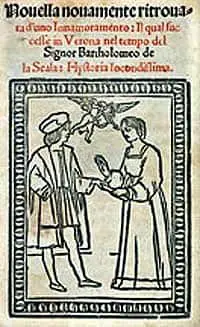
Il Novellino is a book with 50 short stories, probably written by Masuccio from Salerno in mid 15th century. It tells the story, number 33, of a love couple in Siena, Toscana. Mariotto och Ganozza is the youngster’s name. They’re involved in a much lighter, happier, and more erotically charged affair. Mariotto doesn’t kill himself, but he’s decapitated, and Ganozza doesn’t die but seeks solitude in a convent after her lover’s death.
And here we return to the text by Luigi da Porto. He wrote the novel Historia novellamente ritrovata di due nobili amanti, Newly found story of two noble lovers at the beginning of 1500. He was definitely inspired by Masuccio’s story but changed the location to Verona. Da Porto was born in Vicenza and both cities were important metropolis of the very powerful Republic of Venice. (Venice was at the time fighting The League of Cambrai; the Papal states, Maximilian I of Habsburg, Spain, France, and the Dukes of Mantova and Ferrara… Most of Europe all by themselves.)
The names of the two feuding clans, Montecchi and Capelletti as well as Romeo, could have come from Dante Alighieri and his Divina Comedia written already in the beginning of 1300.
Fighting for Venice.
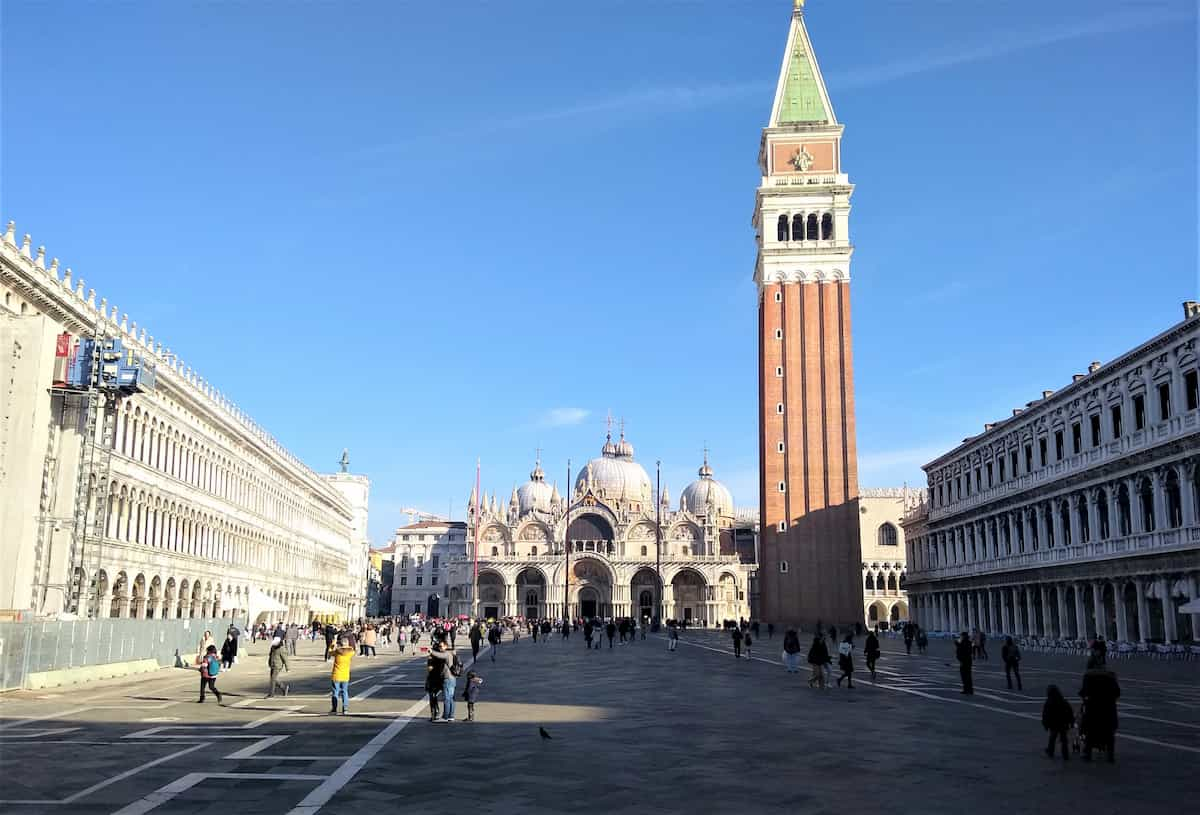 It is highly probable that Da Porto at the time of writing the book just had experienced a love affair, with his 16 years old cousin, Lucina Sarvognan in Udine, north of Venice. He is supposed to have entered a Carnival Masquerade Ball in Udine, with a false invitation. Maybe so that he could be with his love for just one evening. The novel is dedicated to her.
It is highly probable that Da Porto at the time of writing the book just had experienced a love affair, with his 16 years old cousin, Lucina Sarvognan in Udine, north of Venice. He is supposed to have entered a Carnival Masquerade Ball in Udine, with a false invitation. Maybe so that he could be with his love for just one evening. The novel is dedicated to her.
The Sarvognans was an extremely important noble house in Friuli. They controlled politics and business and they were respected among the highest authorities in Venice. So powerful that the different branches of the big family tree had feud-like disagreements for lengthy periods of time.
Lucina Sarvognan and Luigi da Porto were cousins, but Luigi on his mother’s side. Unfortunately, they were on different sides of the Family tree and they couldn’t show their love openly. They were supposed to have been married secretly, but we have no evidence for that. Da Porto was 26 years and Lucina was 16. It could have been more of Da Porto falling in love and Lucina being flattered, but as said, we don’t know. Anyway, this could have been the origin of Romeo and Juliet the true story.
Romeo and Juliet, the true story. Time of War.
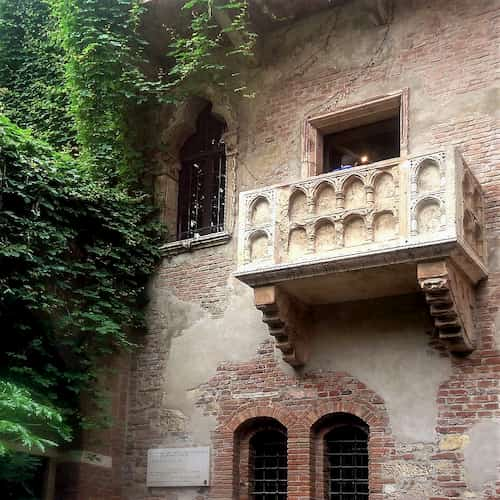
When Da Porto wrote his book, there was a multitude of disorder in Udine and Friuli. Two political movements fought over the territory, the Strumieri, who included Nobles like the Castellani, and on the other side, the Zambarlani, who were more or less the big part of the Sarvognan family, Burgers, and farmers. Da Porto’s uncle Antonio Sarvognans was the leader of the latter.
To this came the wars with the French and with the Habsburgs (Austria), which also divided the loyalties of the Friulians. Not everybody was in favor of Venice.
Da Porto participated in the battles against the Habsburgs at the northern borders, and he was badly wounded. He retired to his Villa outside of Vicenza. From his bedroom window, he had a spectacular view of the hillside city of Montecchio Maggiore with its two hilltop castles. That is what he was looking at outside when he wrote the novel and it surely had an impact on his choice of names as well as subject.
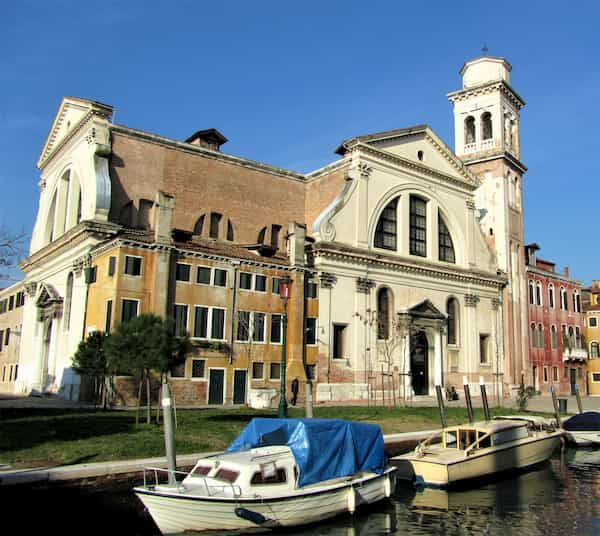
So, at the end of our journey, let’s go back to Venice…
Even in Venice, there were feuds. The true story of Romeo and Juliet could also be found in the feud between the Castellani and the Nicolotti in Venice.
Venice was practically divided between these two families with their allies. The Castellani controlled the southern and eastern parts, while the Nicolotti held the northern parts. They kept their territories and fought against any kind of connection between the fractions for many hundreds of years. So fierce were the hate and distrust that controlled fist-fights were arranged at the bridges. Two teams lined up from each side, and the object was to simply throw the guy from the other side into the canal.
The San Trovaso-church was situated exactly where their territories met. And it’s maybe the only church in the world that has two main entrances… So that the two clans couldn’t start arguing while entering the holy temple.
Da Porto was familiar with the situation, being a citizen of the Republic. He could very well have included the everyday situation in Venice in his writing.
Romeo and Juliet, summing it up.
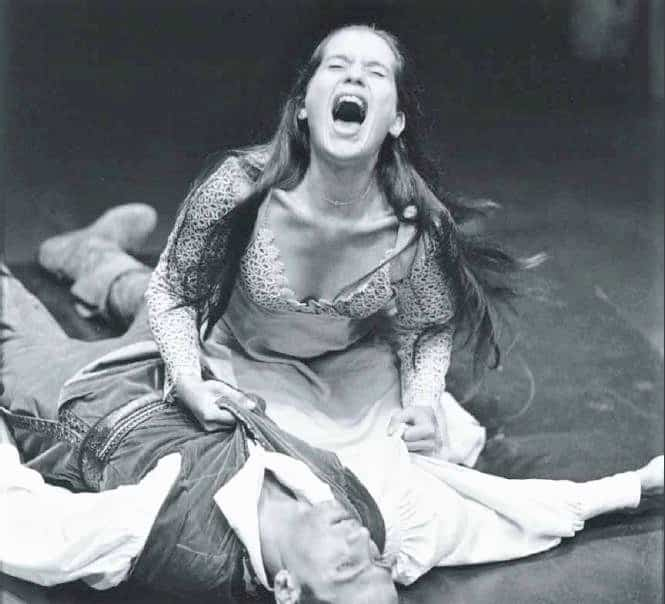
William Shakespeare got his story from Arthur Brooke, who got it from Matteo Bandello, who got it from Luigi da Porto, who got the story from Masuccio Salernitano, who at least got a lot of fragments to his story from older writers. Stories about tragic love affairs have always been popular. Especially in the middle ages, stories of family feuds, poison, murders, suicides, and young love were highly profitable.
I believe Da Porto wrote about what he knew, and just like any good writer should, he borrowed from what he had around him.
There is no evidence of his marriage to Lucina. We don’t even know if their love was real or just imaginative from Da Porto’s side.
William Shakespeare then took the story and turned it into a universal masterpiece.
But it doesn’t end there. From the beginning of time, it had continued to grow and it continued to grow even after Shakespeare… And one of the best versions up to date is, without any doubt, West Side Story by Leonard Bernstein.
Conclusion
No, Romeo and Juliet in Da Porto’s world, or in the world of any other of the many authors, wasn’t very different from the play by Shakespeare. That’s simply because there is no true story. There are no real-life Romeo and Juliet, apart from the story about every young lover out there who suffers.
Romeo and Juliet is a story… A very good one, but still just a story.
sources
- Royal Shakespeare Company / Romeo and Juliet
- Vanni de Conti / Il Fascino di Giulietta & Romeo
- Il Friuli Venezia Giulia / La vera storia di Giulietta e Romeo, nobili friulani del XVI secolo
- Wikipedia / Roemo and Juliet
- Wikipedia / Savorgnan
- Wikipedia / Matteo Bandello
- Huffington Post / Luigi Da Porto, il vero scrittore di Romeo e Giulietta